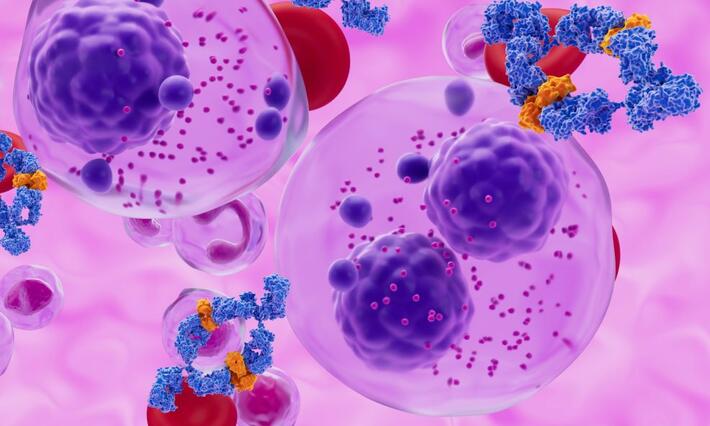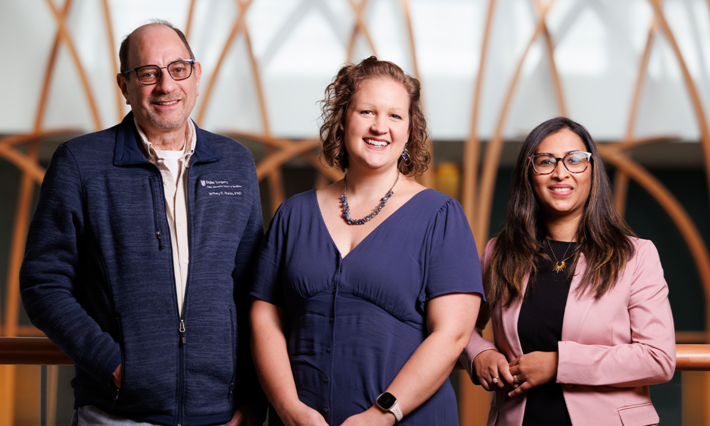
When Duke Cancer Institute researcher Christopher Pirozzi, PhD, was an intern doing stem cell research in Australia, he spotted a child’s mobile of a pig with wings in one of the director’s offices. He said it embodied exactly what research meant to him — making the seemingly impossible, possible.
“People think there aren’t cures for some diseases, but I disagree,” said Pirozzi, who was honored at DCI’s 5th Annual Scientific Retreat for his ground-breaking work on malignant brain tumors with this year’s recipient of the Robert and Barbara Bell Award for Basic Science Cancer Research. “It isn’t all doom and gloom.”
If the research presented at the annual gathering — held on October 27 at Bay 7 in the American Tobacco District of Durham — is any indication, “making pigs fly,” in cancer terms, maybe isn’t so far off.
“I’m so proud of the extraordinary work that’s done by investigators and trainees here at the Duke Cancer Institute,” said DCI executive director Michael Kastan, MD, PhD introducing the eight winners of DCI’s abstract competition, including Pirozzi, across the categories of basic science, population science, translational and clinical research.
The up-and-comers selected this year are working in the fields of neuro-oncology, hematologic malignancies and cellular therapy, cancer control and population science, and radiation oncology. They had the opportunity to present their work in front of about 230 Duke physicians, researchers, and staff, plus deputy director of the National Cancer Institute, Douglas R. Lowy, MD, this year’s guest speaker.
Pirozzi, a postdoctoral fellow in the DCI Neuro-Oncology research program who works in the onco-genomics Yan Lab, was first up. In addition to the Bell award, he received a presentation award in the field of basic science research for his abstract — Mutant IDH1 Disrupts the Mouse Subventricular Zone and Alters Brain Tumor Progression — the findings of which were also published in the journal of Molecular Cancer Research this year.
“We call that a hat trick,” said retreat emcee Christopher Counter, PhD, introducing Pirozzi.
Pirozzi’s research builds on a discovery nearly a decade ago led by Hai Yan, MD, PhD, of genetic mutations in the IDH1 and IDH2 genes of malignant gliomas, the most common type of brain tumors and among the most frequent causes of cancer death in children and young adults.
“This was rather significant because this mutation, in IDH1, was expressed in more than 80 percent of low-grade gliomas, and gave us a foundation to start targeting them therapeutically,” explained Pirozzi. “What we’re doing now is establishing models that can be used to understand the progression of the disease. We’re trying to figure out how to harness the power of the immune system to target these mutations, to ultimately cure the disease.”








